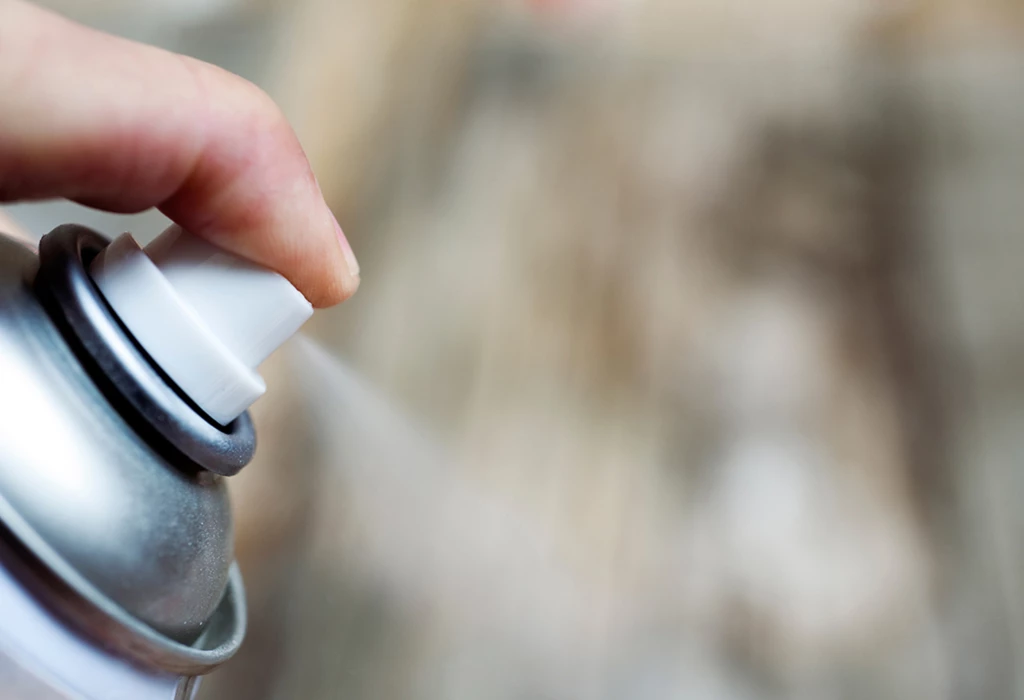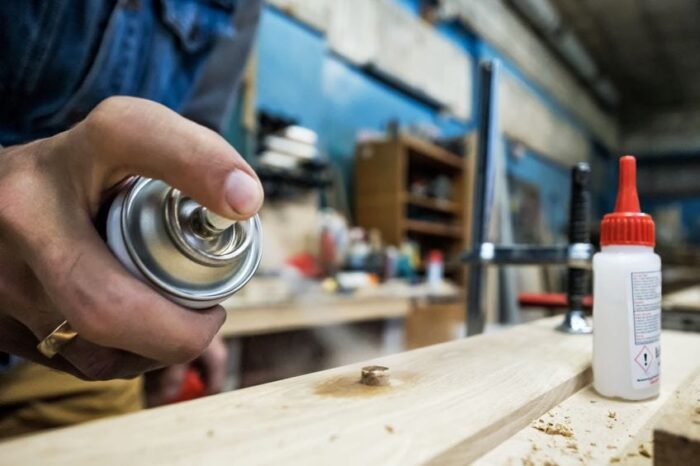
Spray adhesive is a versatile and convenient adhesive that can be used in a wide range of applications. It is a type of adhesive that is sprayed onto a surface, providing a strong and durable bond. Whether you’re working on a DIY project or a professional job, spray adhesive can be an excellent choice for bonding a variety of materials, including paper, fabric, wood, metal, and plastic. However, with so many types available on the market, choosing the right one for your specific needs can be challenging.
In this ultimate guide to spray adhesive, we will explore the different types of spray adhesive, their benefits, and their applications. By the end of this guide, you will have a comprehensive understanding of spray adhesives and be able to choose the right type for your next project.

Types of Spray Adhesives
Spray adhesives are available in various types, including:
- Rubber-Based: These bonds are made from synthetic rubber and are ideal for bonding materials such as paper, cardboard, fabric, and leather.
- Solvent-Based: These sealants use a solvent as the primary bonding agent and are ideal for bonding materials such as foam, plastic, and metal.
- Water-Based Drizzle: These adhesives use water as the primary bonding agent and are ideal for bonding materials such as wood, paper, and fabric.
- Epoxy-Based Sprinkle: These sealants use epoxy resin as the primary bonding agent and are ideal for bonding materials such as metal, glass, and ceramics.
Benefits of Using Spray Adhesives
There are several benefits of using spray adhesives over traditional adhesives. Firstly, spray adhesives are very easy to use and apply, as they come with a sprinkle nozzle that allows for precise application. This makes them ideal for time-sensitive projects where you need to work quickly and efficiently.
Another benefit of mist sealants is their versatility. They can bond a wide range of materials, including paper, cardboard, fabric, leather, foam, plastic, metal, wood, glass, and ceramics. This makes them an ideal solution for a variety of applications, including crafting, upholstery, automotive, construction, and packaging.
Spray bonds also offer strong bonding properties, creating a powerful and long-lasting bond between materials. They can withstand high temperatures, moisture, and chemicals, making them reliable and durable.
Finally, sprinkle adhesives provide a clean and efficient bonding solution. Unlike traditional sealants, they do not leave any residue, which makes them ideal for applications where a clean finish is essential. Overall, jet bonds offer numerous benefits that make them a popular choice for bonding and adherent applications.

Applications of Spray Adhesives
Spray glues have numerous applications across various industries. They are commonly used in crafting and DIY projects, where they provide a quick and efficient bonding solution. Upholstery and furniture manufacturers also rely on rush bonds to bond foam and fabric materials.
In the automotive industry, disseminate bonds are used to bond interior fabrics and trim pieces. They are also used to bond insulation materials and soundproofing materials.
Construction and building applications also make use of mist bonds for bonding insulation materials and drywall. In the packaging industry, sprinkle adhesives are used for carton sealing and pallet stabilization.
In addition to these industries, drizzle cement is also used in the aerospace industry, where they are used for bonding insulation and soundproofing materials. The marine industry also relies on drizzle bonds for bonding materials such as fiberglass and foam.
Overall, most sealants have a wide range of applications across various industries, providing a quick, efficient, and reliable bonding solution for many materials.
Factors to Consider When Choosing Spray Adhesive
When choosing a spray sealant, there are several factors to consider to ensure that you select the right type for your specific needs. One of the critical factors is the material you plan to bond. Different types of spray bonds are designed to bond specific materials, such as wood, metal, or fabric. You should also consider the environment where the bonding will take place, as some mist adhesives are better suited for high-temperature or moisture-prone environments.
Drying time is another essential factor to consider. Some spray bonds dry quickly, while others require more time. You should also evaluate the strength of the bond, as some spray sealants offer stronger bonds than others. The application method is also crucial, as some mist adhesives are designed for specific application techniques.
Finally, safety concerns should also be taken into account when selecting a mist adhesive. Some types can be flammable or toxic, so you should always follow safety precautions when using them. By considering these factors, you can choose the right spray sealant for your needs and ensure that your project is successful.

Safety Precautions
When working with spray adhesives, safety precautions should always be taken to prevent harm to yourself and others. Proper ventilation is crucial, as many adhesives can release harmful fumes. Personal protective equipment, such as gloves and a respirator, should also be worn when using certain types. Adhesives can also be flammable, so they should be stored and used away from sources of heat or flames. Additionally, be sure to follow the manufacturer’s instructions and warnings carefully to prevent accidents. By taking these safety precautions, you can use spray sealants safely and effectively.
Conclusion
In conclusion, spray adhesive is an incredibly versatile and convenient adhesive that can be used in a wide range of applications. From DIY projects to professional jobs, there is a spray adhesive available for almost any bonding need. In this ultimate guide to spray bonds, we have explored the different types, their benefits, and their applications. We have learned that some mist sealants are better suited for certain materials, while others are better suited for specific environments. It is essential to consider your specific bonding needs before selecting a spray sealant. By doing so, you can ensure that you choose the right type to get the job done quickly, efficiently, and with excellent results. With the knowledge gained from this guide, you can confidently select and use spray sealants for your next project.











